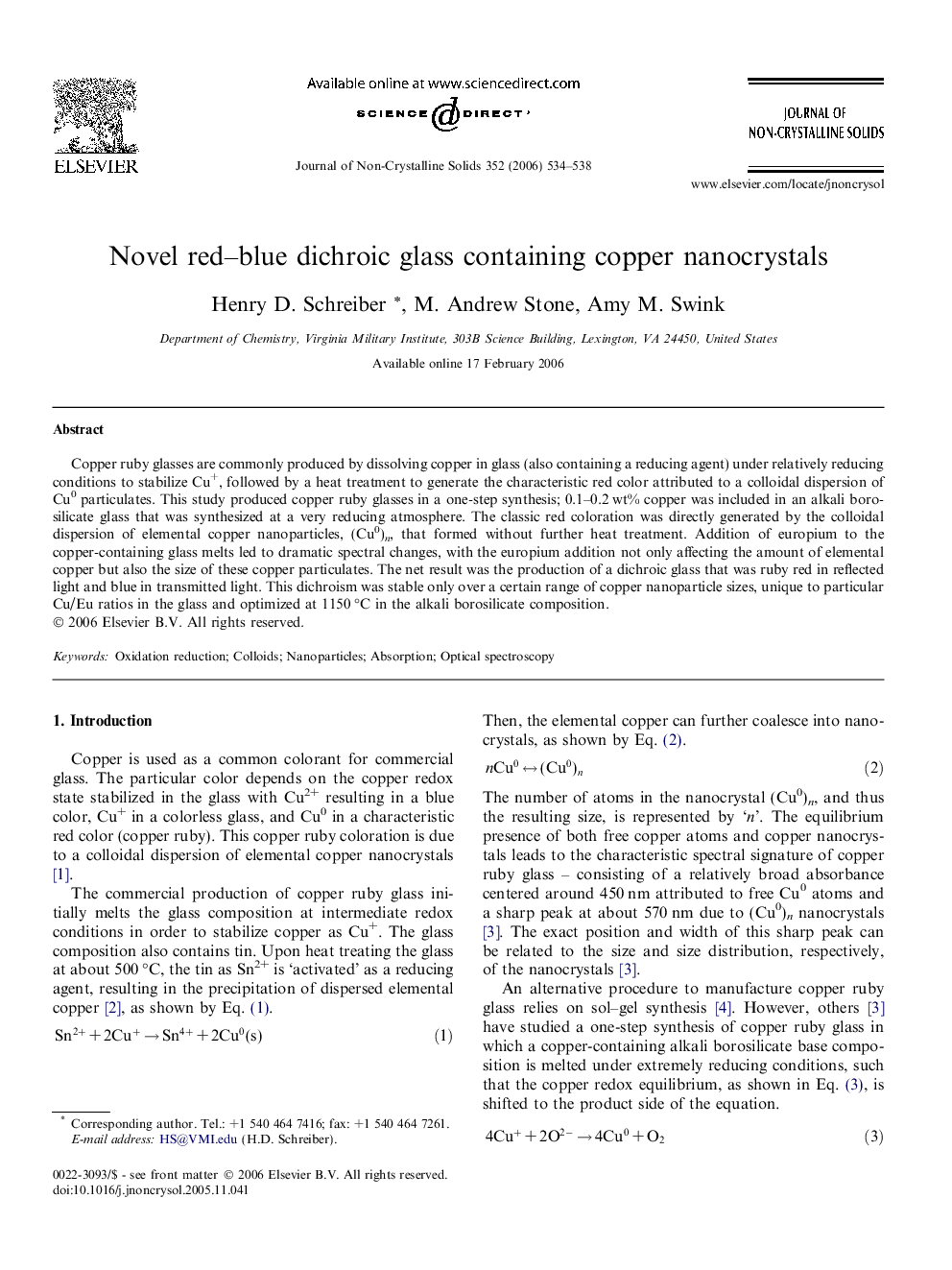| Article ID | Journal | Published Year | Pages | File Type |
|---|---|---|---|---|
| 1486497 | Journal of Non-Crystalline Solids | 2006 | 5 Pages |
Copper ruby glasses are commonly produced by dissolving copper in glass (also containing a reducing agent) under relatively reducing conditions to stabilize Cu+, followed by a heat treatment to generate the characteristic red color attributed to a colloidal dispersion of Cu0 particulates. This study produced copper ruby glasses in a one-step synthesis; 0.1–0.2 wt% copper was included in an alkali borosilicate glass that was synthesized at a very reducing atmosphere. The classic red coloration was directly generated by the colloidal dispersion of elemental copper nanoparticles, (Cu0)n, that formed without further heat treatment. Addition of europium to the copper-containing glass melts led to dramatic spectral changes, with the europium addition not only affecting the amount of elemental copper but also the size of these copper particulates. The net result was the production of a dichroic glass that was ruby red in reflected light and blue in transmitted light. This dichroism was stable only over a certain range of copper nanoparticle sizes, unique to particular Cu/Eu ratios in the glass and optimized at 1150 °C in the alkali borosilicate composition.
